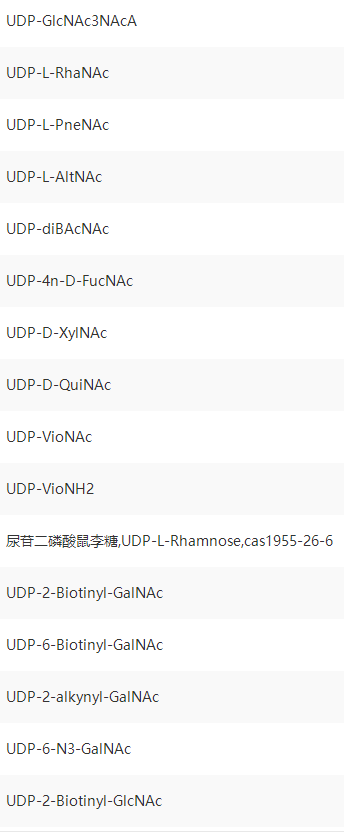半乳糖脂质体
半乳糖脂质体
保存:冷藏
产地:上海
用途:药物载体
说明:可定制
状态:固体/粉末/溶液
厂家:上海金畔生物科技有限公司
| 参数信息 | |
|---|---|
| 外观状态: | 固体或粉末 |
| 质量指标: | 95%+ |
| 溶解条件: | 有机溶剂/水 |
| CAS号: | N/A |
| 分子量: | N/A |
| 储存条件: | -20℃避光保存 |
| 储存时间: | 1年 |
| 运输条件: | 室温2周 |
| 生产厂家: | 上海金畔生物科技有限公司 |

半乳糖脂质体
半乳糖脂质体
保存:冷藏
产地:上海
用途:药物载体
说明:可定制
状态:固体/粉末/溶液
厂家:上海金畔生物科技有限公司
| 参数信息 | |
|---|---|
| 外观状态: | 固体或粉末 |
| 质量指标: | 95%+ |
| 溶解条件: | 有机溶剂/水 |
| CAS号: | N/A |
| 分子量: | N/A |
| 储存条件: | -20℃避光保存 |
| 储存时间: | 1年 |
| 运输条件: | 室温2周 |
| 生产厂家: | 上海金畔生物科技有限公司 |
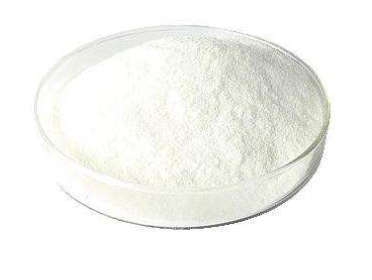
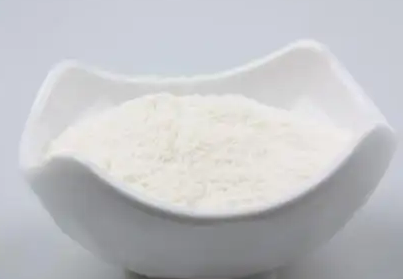
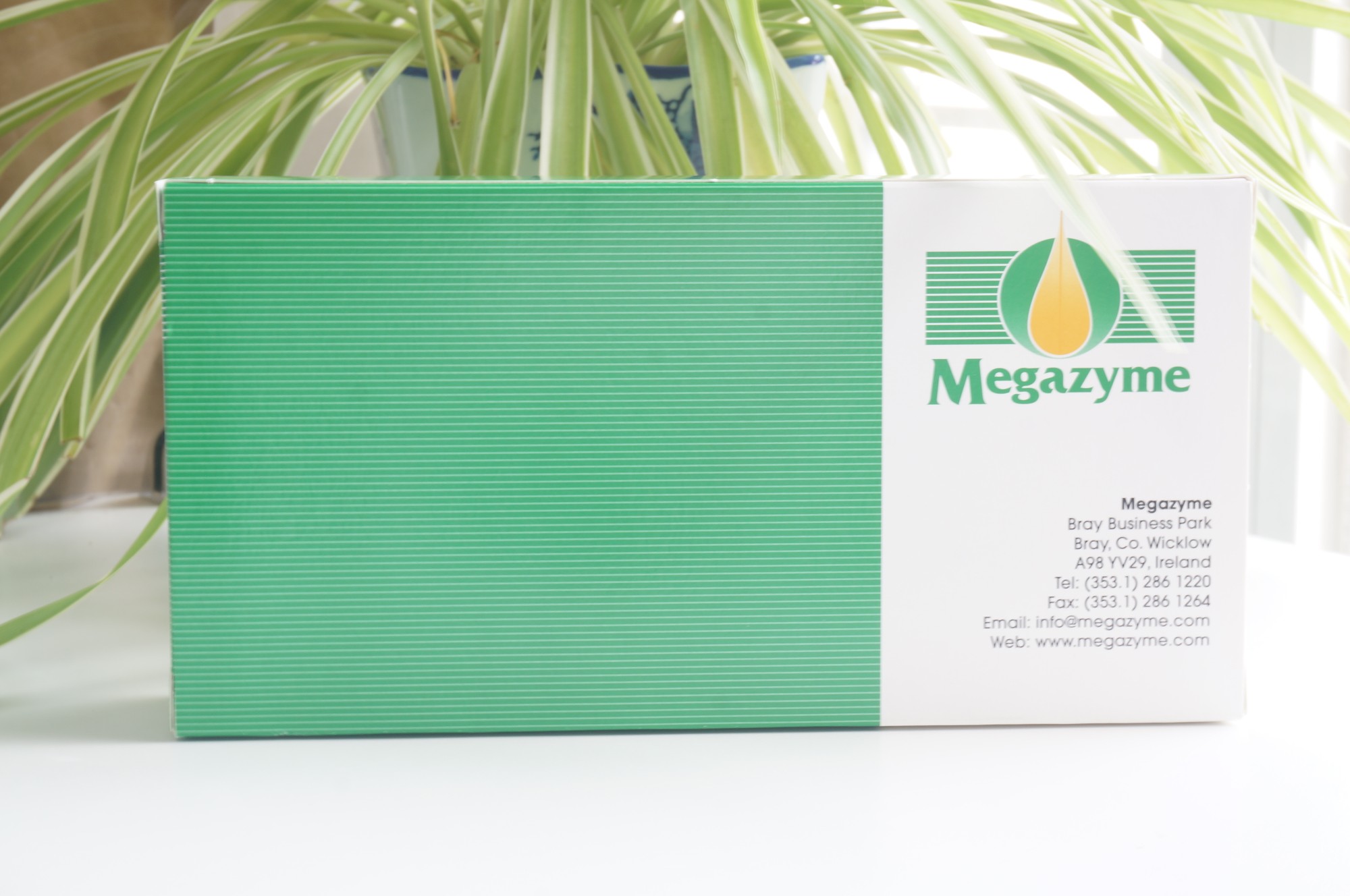
MegazymeD-葡萄糖醛酸/ D-半乳糖醛酸检测试剂盒,K-URONIC
是一种简单,可靠和准确的方法,用于测量和分析植物提取物,培养基/上清液和其他物质中的D-己糖醛酸(特别是 D-葡萄糖醛酸和D-半乳糖醛酸)。材料。
内容说明: 如果将所有体积减半,则每个套件的手动测试次数可以加倍。使用MegaQuant TM 波长分光光度计(D-MQWAVE)可以很容易地适应这一点。
| 内容: | 100次检测(手动)/ 1000次检测(微孔板)/ 1000次检测(自动分析仪) |
| 运输温度: | 室温 |
| 贮存温度: | 短期稳定性:2-8 o C, 长期稳定性:参见各个组件标签 |
| 稳定性: | 在推荐的存储条件下> 2年 |
| 分析物: | D-半乳糖醛酸,D-葡萄糖醛酸 |
| 分析形式: | 分光光度计,微孔板,自动分析仪 |
| 检测方法: | 吸光度 |
| 波长(nm): | 340 |
| 信号响应: | 增加 |
| 线性范围: | 每次测定5至150微克D-葡萄糖醛酸或D-半乳糖醛酸 |
| 检测限: | 〜15.5毫克/升 |
| 反应时间(分钟): | 25 o C时〜10分钟或37 o C 时〜5分钟 |
| 应用实例: | 植物材料和多糖等材料的水解产物。 |
| 方法识别: | 新颖的方法 |
非常划算
所有试剂在使用过程中稳定> 2年
仅提供测试套件
简单格式
可从我们的网站上获得Mega-Calc ™软件工具,以进行无忧的原始数据处理
含标准
适用于手动,微孔板和自动分析仪格式
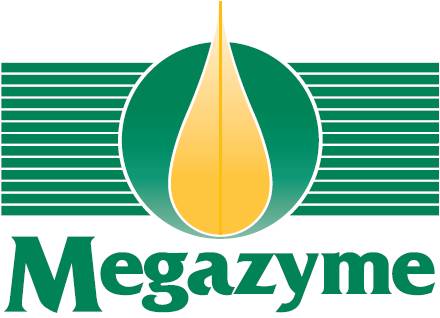
Megazyme棉子糖/D-半乳糖 检测试剂盒,K-RAFGA
可用于植物材料和食品中的棉子糖和D-半乳糖的快速检测。
内容说明: 如果将所有体积减半,则每个套件的手动测试次数可以加倍。使用MegaQuant TM 波长分光光度计(D-MQWAVE)可以很容易地适应这一点。

| 内容: | 每个试剂盒120次检测 |
| 运输温度: | 室温 |
| 贮存温度: | 短期稳定性:2-8 o C, 长期稳定性:参见各个组件标签 |
| 稳定性: | 在推荐的存储条件下> 2年 |
| 分析物: | D-半乳糖,棉子糖 |
| 分析形式: | 分光光度计 |
| 检测方法: | 吸光度 |
| 波长(nm): | 340 |
| 信号响应: | 增加 |
| 线性范围: | 每次测定4至83 µg D-半乳糖(即每次测定约12至250 µg棉子糖) |
| 检测限: | 21毫克/升 |
| 反应时间(分钟): | 〜60分钟 |
| 应用实例: | 谷物粉,大豆粉,蔗糖生产的副产品和其他材料。 |
| 方法识别: | 在食品分析中使用并被接受 |
由于包含半乳糖突变酶,反应非常快(专利技术)
极具竞争力的价格(每次测试费用)
制备后所有试剂均稳定> 2年
可从我们的网站上获得Mega-Calc ™软件工具,以进行无忧的原始数据处理
含标准
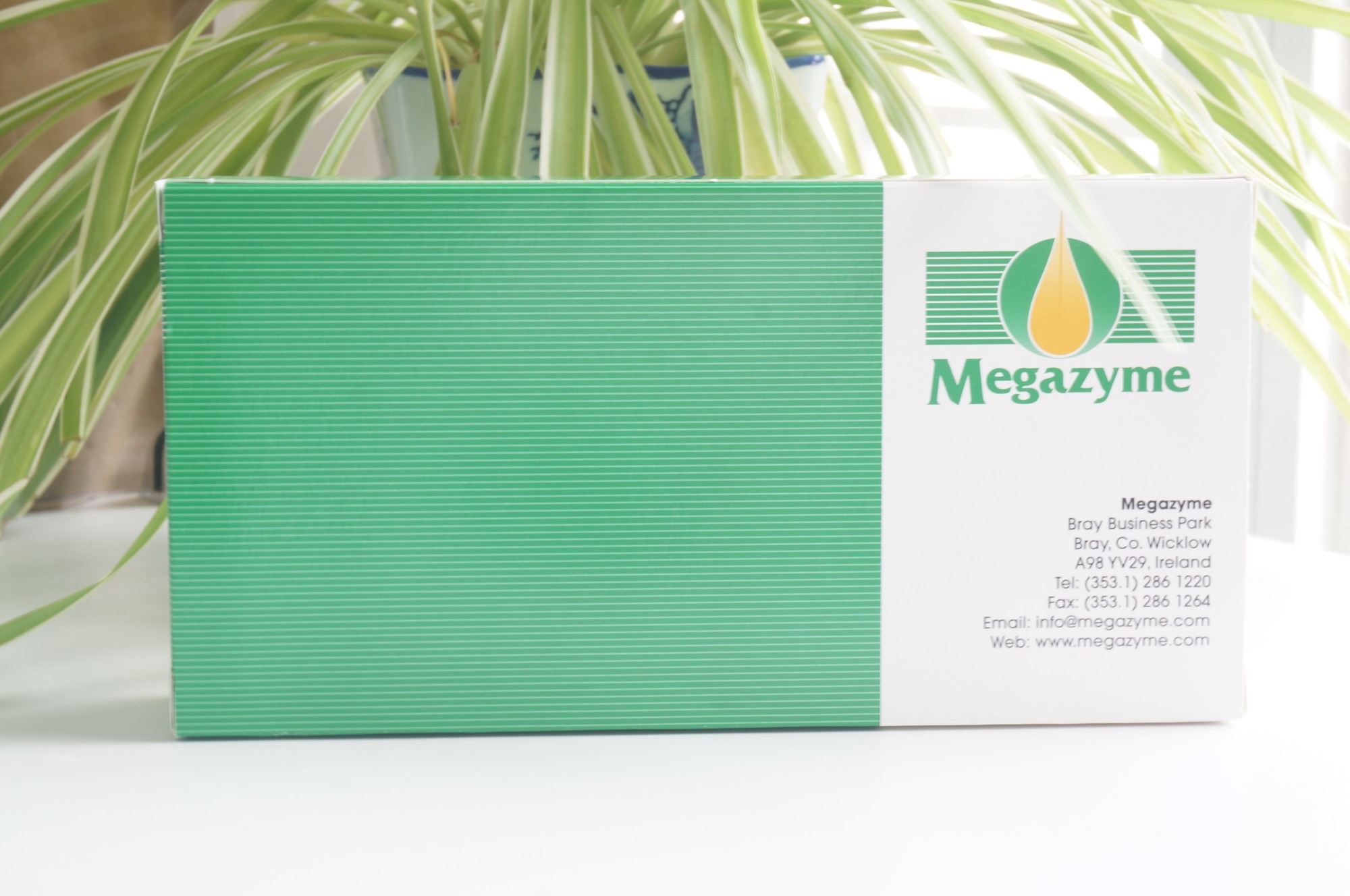
爱尔兰Megazyme低聚半乳糖检测试剂盒,用于食品和植物中乳糖、D-半乳糖和L-阿拉伯糖的快速检测。半乳糖脱氢酶可用于D-半乳糖和L-阿拉伯糖的测量和分析。本试剂盒提供的试剂也适用于AOAC 法2006.06牛奶中乳糖检测。
乳糖和D半乳糖检测,紫外法
食品,饮料和其它材料
原理
(β半乳糖苷酶)
(1)乳糖+ H 2 O → D半乳糖+ D -葡萄糖
(半乳糖变旋酶)
(2)α- D-半乳糖 → β-D-半乳糖
(β-半乳糖脱氢酶)
(3)β-D-半乳糖+ NAD + → D-半乳糖酸+ NADH + H +
试剂盒规格:115测定
方法: 分光光度340 nm
反应时间: 15 min
检测限: 2.96 mg / L(乳糖)
方法认可: 已被AOAC 2006.06,NBN
DIN,GOST和IDF认可
优点: 含半乳糖变旋酶,反应快速
专利技术PCT / IE2004 / 00170
包括标准品、酶、成本低!
试剂稳定性>2年
应用实例:
牛奶,乳制品(如奶油,牛奶/乳清粉,奶酪,炼乳和酸奶)
含牛奶的食物(如营养食品,烘焙食品,婴儿食品,巧克力,糖果和冰激凌)
食品添加剂, 饲料,化妆品,药品和其他材料(如生物培养物,样品等)
如欲获得报价请致电021-50837765
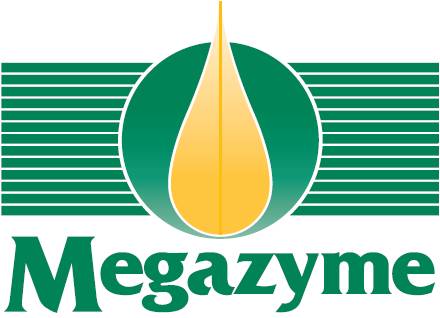
Can be employed for the rapid determination of D-galactose or L-arabinose. See Lactose / D-Galactose (Rapid) Assay Kit (K-LACGAR) for full details. EC 1.1.1.48 and EC 5.1.3.3, respectively. Recombinant from E. coli. These recombinant enzymes have been expressed in E. coli and purified by affinity chromatography. Electrophoretically homogeneous. In 3.2 M ammonium sulphate. Specific activity (of GalDH before mixing with mutarotase): 390 U/mg (25oC, pH 8.6, on D-galactose). Contaminants: α-galactosidase, < 0.00004 %; β-galactosidase, 0.0003 %; NADH oxidase, < 0.0003 %; alcohol dehydrogenase, trace. Stable at 4oC for > 2 years.
英文名:AZCL-Galactan (Potato) 3g
货号:I-AZGLP
规格:3g
市场价: 3100元 1,4-?-D-半乳糖内切酶检测底物
PDF Download
暂无问题解答
暂无视频
英文名:Galactose dehydrogenase – Galactose mutarotase
货号:E-GALMUT
规格:1 mL; galactose dehydrogenase (200 U/mL) / galactose mutarot
市场价: 3922元
High purity recombinant Galactose dehydrogenase/Galactose mutarotase for use in research, biochemical enzyme assays and in vitro diagnostic analysis.
Can be employed for the rapid determination of D-galactose or L-arabinose. See Lactose/D-Galactose (Rapid) Assay Kit (K-LACGAR) for full details.
EC 1.1.1.48 and EC 5.1.3.3, respectively.
Recombinant from E. coli. These recombinant enzymes have been expressed in E. coli and purified by affinity chromatography. Electrophoretically homogeneous. In 3.2 M ammonium sulphate.
Specific activity (of GalDH before mixing with mutarotase): 390 U/mg (25oC, pH 8.6, on D-galactose).
Stable at 4oC for > 2 years.
暂无问题解答
暂无视频
英文名:Lactose/Sucrose/D-Glucose Assay Kit
货号:K-LACGAR
规格:115 assays per kit
市场价: 6042元
乳糖/D-半乳糖[快速]检测试剂盒
Megazyme低聚半乳糖和半乳糖检测试剂盒采用专利技术,在试剂盒中加入半乳糖变旋酶,可快速催化限速变旋步骤,室温下5分钟即可获得检测结果。试剂盒规格:115次方法:分光光度计,340nm 反应时间: 5分钟检测限: 2.96mg/L 样品类型:牛奶、乳制品(如奶油、奶粉、乳清粉、奶酪、炼乳和酸奶)、含乳食品(如保健食品、焙烤食品、婴幼儿食品、巧克力、糖果和冰淇淋)、食品添加剂、饲料、化妆品、医药及其他物料。方法认证: 通过AOAC、NBN、DIN、GOST以及德国、荷兰、瑞士和奥地利的认证.
分析物意义:常见加工食品组分,在某些情况下,精确的数值很重要,如 “无乳糖”产品
Megazyme检测试剂盒优点:K-LACGAR试剂盒反应快(室温,5min)、试剂稳定
The Lactose/Galactose (Rapid) test kit is used for the rapid test of lactose, D-galactose and L-arabinose in food and plant products. Galactose dehydrogenase can be used the measurement and analysis of both D-galactose and L-arabinose. Suitable for the analysis of lactose in “low-lactose” or “lactose-free” samples which contain high levels of monosaccharides.
UV-method for the determination of Lactose and D-Galactose in
foodstuffs, beverages and other materials
Principle:
(β-galactosidase)
(1) Lactose + H2O → β-D-galactose + D-glucose
(galactose mutarotase)
(2) α-D-Galactose ↔ β-D-galactose
(β-galactose dehydrogenase)
(3) β-D-Galactose + NAD+ → D-galactonic acid + NADH + H+
Kit size: 115 assays
Method: Spectrophotometric at 340 nm
Reaction time: ~ 15 min
Detection limit: 2.96 mg/L (lactose)
Application examples:
Milk, dairy products (e.g. cream, milk / whey powder, cheese,
condensed milk and yogurt), foods containing milk (e.g. dietetic foods,
bakery products, baby food, chocolate, sweets and ice-cream), food
additives, feed, cosmetics, pharmaceuticals and other materials
(e.g. biological cultures, samples, etc.)
Method recognition:
Methods based on this principle have been accepted by AOAC, NBN,
DIN, GOST and IDF
Advantages
The pH of the assay solution after the sample is added should be the same as that of the assay buffer that is supplied with the kit.
Low sample volumes (e.g. 0.1 mL) are not likely to affect the pH of the assay solution and therefore may not require pH adjustment.
Samples above 0.1 mL are more likely to affect the pH of the assay solution and therefore the pH of these samples should be adjusted as described in the data booklet, prior to addition to the assay.
Procedure B is required for “low-lactose” or “lactose-free” samples containing high levels of monosaccharides. Generally, these types of samples contain high levels of “free” galactose which causes a high background and reduces the dynamic range available to measure the galactose that is released from lactose in the test. To avoid this the borohydride step is used to reduce the free galactose.
Sometimes the addition of the last assay component can cause a small negative absorbance change in the blank samples due to a dilution effect and in such cases it is recommended that the real absorbance values be used in the calculation of results.
If you suspect that the Megazyme test kit is not performing as expected such that expected results are not obtained please do the following:
Instead of the normal Carrez sample treatment, 1 mL of milk is added to 4 mL of water and 1 mL of 10 mg/mL sodium borohydride (dissolved in 50 mM NaOH and less than 5 hours old). This solution is incubated in a closed plastic container at 40˚C for 30 min, after which it is neutralised by the addition of 2.5 mL of 0.2 M acetic acid, and then simply filtered through Whatman No. 1 filter paper. The extract, that will be hazy, is analysed without any further treatment, and 0.2 mL per assay should be used (according to the normal procedure). Although the samples are all hazy, this haze is stable in the assay and contributes very little to the absorbance.
In the assay the borohydride reduces all reducing sugars in the milk to their sugar alcohols, i.e. glucose goes to sorbitol, galactose goes to galactitol, and the residual lactose that we are interested in goes to lactitol. Then the usual beta-galactosidase in the kit hydrolyses the produced lactitol into galactose and sorbitol. However, as the borohydride has been neutralised at this stage, the galactose remains as galactose, and thus can be acted upon and quantified by the galactose dehydrogenase.
The extra reagents (to K-LACGAR) that are required to perform such analyses are:
Note: After borohydride reduction of the sample the incubation step with beta-galactosidase should be increased to 1 hour.
Yes, this is possible. Here are two options for sample preparation methods for pastry products:
1. Mill or homogenise sample materials. Weigh out a representative sample and extract with water (heated to 60˚C if necessary). Quantitatively transfer to a volumetric flask and dilute to the mark with distilled water. Mix, filter and use the appropriately diluted, clear solution for the assay.
Alternatively the sample can be treated with Carrez reagents after the extraction with water:
2. Mill or homogenise sample materials. Accurately weigh approx. 1 g of into a 100 mL volumetric flask, add approx. 40 mL of distilled water, mix and store at 60˚C for 15 min with occasional swirling. Add 2 mL of Carrez II solution and mix. Add 2 mL of Carrez I solution and mix. Add 4 mL of 100 mM NaOH solution and mix vigorously. Dilute to volume with distilled water and mix thoroughly. Filter an aliquot of the solution through Whatman No. 1 filter paper.
Discard the first few mL of filtrate. Use the clear filtrate (sample solution) in the assay. Alternatively centrifuge in a microfuge tube at 13000 x rpm and using the clear supernatant in the assay.
The procedures given here can be modified to suit the sample, e.g. the dilution effect of the lactose in the sample can be reduced by extracting the sample in a lower volume of water so that the final concentration of lactose is detectable by the kit. This would need to be assessed by the user.
The linear range of 0.008 – 0.16 g/L is based on the recommended minimum absorbance change of 0.1, however some users are comfortable working below this level hence the limit of detection is based on a 1 mL sample volume and minimum absorbance change of 0.02. The sample volume can be altered; for samples containing low concentrations of lactose the sample volume can be increased to up to 1 mL however the distilled water volume must be altered accordingly so that the final assay volume is not altered, otherwise the calculation will be affected (see page 7 of the K-LACGAR booklet). For concentrated samples these should be diluted in distilled water and the dilution factor included into the calculation.
It is possible to measure the K-LACGAR reactions at 365 nm. In this instance the extinction coefficient of NADH alters from 6300 [L x mol-1 x cm-1] to 3400 [L x mol-1 x cm-1] and this must be accounted for in the calculation of D-glactose and lactose. The calculations for measurements recorded at 365 nm are shown below.
![乳糖/D-半乳糖[快速]检测试剂盒 Lactose/Sucrose/D-Glucose Assay Kit 货号:K-LACGAR Megazyme试剂盒](http://www.dnabct.com/wp-content/uploads/2022/09/20220924_632ed5a347549.jpg)
Note: Alternatively the MegaCalc application may be used for easy processing of raw data values, however if the MegaCalc application is used for calculations recorded at 365 nm then the calculated values (g/L) must be multiplied by 1.8529.
This kit can be used as described in the format below to measure L-arabinose but not D-arabinose:
FORMAT:
Wavelength: 340 nm
Cuvette: 1 cm light path (glass or plastic)
Temperature: ~ 25°C
Final Volume: 2.72 mL
Sample solution: 4 – 120 μg of L-arabinose per cuvette
Read against air: without cuvette in light path
![乳糖/D-半乳糖[快速]检测试剂盒 Lactose/Sucrose/D-Glucose Assay Kit 货号:K-LACGAR Megazyme试剂盒](http://www.dnabct.com/wp-content/uploads/2022/09/20220924_632ed5a6b5b4c.jpg)
* for example with a plastic spatula or by gentle inversion after closing the cuvette with a cuvette cap or Parafilm®.
** if this “creep” rate is greater for the sample than for the blank, extrapolate the absorbances (sample and blank) back to the time of addition of suspension 5.
CALCULATION:
Determine the absorbance difference (A2-A1) for both blank and sample. Subtract the absorbance difference of the blank from the absorbance difference of the corresponding sample, thereby obtaining DA.
The concentration of arabinose can be calculated as follows:
![]()
where:
V = final volume [mL]
MW = molecular weight of arabinose [g/mol]
ε = extinction coefficient of NAD+ at 340 nm
= 6300 [L x mol-1 x cm-1]
d = light path [cm]
v = sample volume [mL]
![乳糖/D-半乳糖[快速]检测试剂盒 Lactose/Sucrose/D-Glucose Assay Kit 货号:K-LACGAR Megazyme试剂盒](http://www.dnabct.com/wp-content/uploads/2022/09/20220924_632ed5ad92259.jpg)
If the sample has been diluted in addition to the dilution during preparation, the result must also be multiplied by the additional dilution factor, F.
When analysing solid and semi-solid samples which are weighed out for sample preparation, the content (g/100 g) is calculated from the amount weighed as follows:
![乳糖/D-半乳糖[快速]检测试剂盒 Lactose/Sucrose/D-Glucose Assay Kit 货号:K-LACGAR Megazyme试剂盒](http://www.dnabct.com/wp-content/uploads/2022/09/20220924_632ed5b0f10b6.jpg)
As a general rule: Procedure A is used for samples that are known to contain low levels of free galactose. Procedure B is used for samples that are known to contain high levels of free galactose. If the free galactose content of a sample is unknown it is recommend that the galactose is measured as per the galactose assays in Procedure A.
For “lactose free” samples it is generally recommended that procedure B is used to maximise the absorbance range and enable the sensitive detection of lactose.
“Lactose free” dairy products have usually been processed whereby lactose in the original sample has been hydrolysed to glucose and galactose. These samples will contain high levels of free galactose and should be processed using procedure B. Some samples will be “lactose free” because the original sample never contained lactose so, assuming that the free galactose level is low, these samples can be processed using procedure A.
Step 1: Add 1 g of sample (or homogenised sample) to 4 mL of water, mix then add 1 mL of 10 mg/mL sodium borohydride (dissolved in 50 mM NaOH and less than 5 hours old). Incubate this solution in a sealed plastic container at 40°C for 30 min then neutralise by the addition of 2.5 mL of 0.2 M acetic acid. Transfer all of the borohydride reduced sample (~ 8.5 mL) to a 10 mL volumetric flask and make the final volume to 10 mL with distilled water. Filter through Whatman No. 1 filter paper or centrifuge in a microfuge at 13000 x g and use the filtrate or supernatant directly in the assay or with an appropriate dilution in distilled water (if required). The filtrate may be hazy but this is stable in the assay and contributes very little to the absorbance. Typically use a sample volume of 0.2 mL in Step 2 of PROCEDURE B.
For analysis of results the dilution is 1 and the concentration of the prepared sample is 100 g/L (i.e. 1 g prepared in 10 mL).
Where the amount of analyte in a liquid sample is unknown, it is recommended that a range of sample dilutions are prepared with the aim of obtaining an absorbance change in the assay that is within the linear range.
Where solid samples are analysed, the weight of sample per volume of water used for sample extraction/preparation can be altered to suit, as can the dilution of the extracted sample prior to the addition of the assay, as per liquid samples.
If there are any concerns with any kit components, the first thing to do is to test the standard sample (control sample) that is supplied with the kit and ensure that the expected value (within the accepted variation) is obtained before testing any precious samples. This must be done using the procedure provided in the kit booklet without any modifications to the procedure. If there are still doubts about the results using the standard sample in the kit then send example results in the MegaCalc spread sheet to your product supplier (Megazyme or your local Megazyme distributor).
The kit assay may work for biological fluids assuming that inositol is present above the limit of detection for the kit after any sample preparation (if required). Centrifugation of the samples and use of the supernatant directly in the kit assay (with appropriate dilution in distilled water) may be sufficient. However, if required a more stringent sample preparation method may be required and examples are provided at the following link:http://www.megazyme.com/docs/analytical-applications-downloads/biological_samples_111109.pdf?sfvrsn=2
The test kit has not been tested using biological fluids as samples because it is not marketed or registered as a medical device. This will therefore require your own validation.
The majority of the Megazyme test kits are developed to work in cuvettes using the manual assay format, however the assay can be converted for use in a 96-well microplate format. To do this the assay volumes for the manual cuvette format are reduced by 10-fold. The calculation of results for the manual assay format uses a 1 cm path-length, however the path-length in the microplate is not 1 cm and therefore the MegaCalc spreadsheet or the calculation provided in the kit booklet for the manual format cannot be used for the micropalate format unless the microplate reader being used can.
There a 3 main methods for calculation of results using the microplate format:
For samples with low concentrations of analyte the sample volume used in the kit assay can be increased to increase sensitivity. When doing this the water volume is adjusted to retain the same final assay volume. This is critical for the manual assay format because the assay volume and sample volume are used in the calculation of results.
The volume/weight of sample and total volume of the extract can be modified to suit the sample. This will ultimately be dictated by the amount of analyte of interest in the sample and may require empirical determination. For low levels of analyte the sample:extract volume ratio can be increased (i.e. increase the sample and/or decrease the total extraction volume).
Alternatively, for samples with low concentrations of analyte, a larger sample volume can be added to the kit assay. When altering the sample volume adjust the distilled water volume added to the assay accordingly so that the total assay volume is not altered.
The test kit is extremely accurate – at Megazyme the quality control criteria for accuracy and repeatability is to be within 2% of the expected value using pure analytes.
However, the level of accuracy is obviously analyst and sample dependent.
Yes. Samples with the lower concentrations of analyte will generate a lower absorbance change. For samples with low concentrations of analyte, a larger sample volume can be used in the assay to increase the absorbance change and thereby increase sensitivity of the assay. When doing this the increased volume of the sample should be subtracted from the distilled water volume that is added to the assay so that the total assay volume is unaltered. The increase sample volume should also be accounted for when calculating final results.
No. The 0.1 change of absorbance is only a recommendation. The lowest acceptable change in absorbance can is dictated by the analyst and equipment (i.e. pipettes and spectrophotometer) and therefore can be can be determined by the user. With accurate pipetting, absorbance changes as low as 0.02 can be used accurately.
If a change in absorbance above 0.1 is required but cannot be achieved due to low concentrations of analyte in a sample, this can be overcome by using a larger sample volume in the assay to increase the absorbance change and thereby increase sensitivity of the assay. When doing this the increased volume of the sample should be subtracted from the distilled water volume that is added to the assay so that the total assay volume is unaltered. The increase sample volume should also be accounted for when calculating final results.
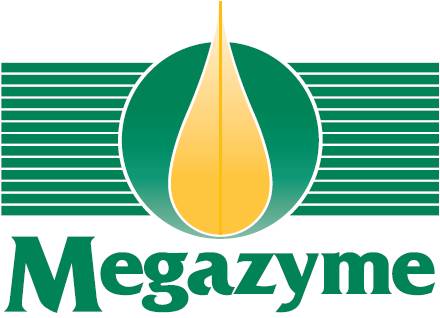
英文名:Tetragalacturonic acid
货号:MO-GALA4
规格:5 mg
市场价: 2300元 爱尔兰Megazyme 四氨基半乳糖醛酸
暂无问题解答
暂无视频
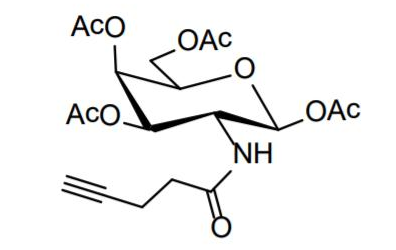
相关产品:
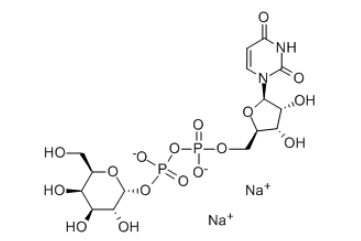
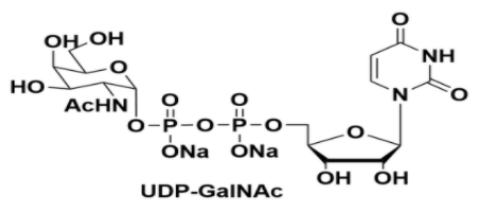
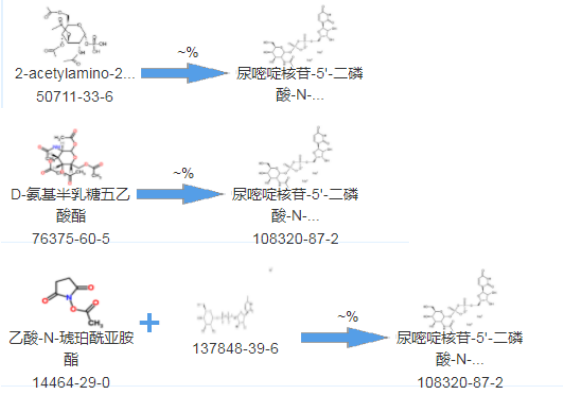
核糖苷酸类:
CAS: 3063-71-6 磷酸胞苷唾液酸 CMP-Sialic acid
CAS: 15839-70-0 二磷酸鸟嘌呤核苷-岩藻糖二钠盐 GDP-L-Fuc
CAS: 103301-73-1 GDP-Mhai
CAS:3616-06-6 UDP-D-Xylose,UDP-D- 木糖
CAS:117756-22-6, 28053-08-9 尿嘧啶核苷-5'-二磷酸葡萄糖 UDP-Glc
CAS:137868-52-1, 2956-16-3 二磷酸尿苷-半乳糖二钠盐 UDP-Gal
CAS:63700-19-6,尿苷二磷酸葡糖醛酸 UDP-GlcA
CAS: 148407-07-2,UDP-GalA
CAS:91183-98-1 尿苷-5′-二磷酸-N-乙酰基-葡糖胺钠盐 UDP-GlcNAc
cas:108320-87-2 二磷酸-N-乙酰氨基半乳糖二钠盐 UDP-GalNAc
UDP-GlcNAz
UDP-GalNAz
CAS: 537039-67-1, UDP-6-azido-6-deoxy-Glc
CAS: 537039-67-1, UDP-6-azido-6-deoxy-Gal
UDP-MhaiNacA
UDP-4-azido-4-deoxy-D-Glc 叠氮基-4-脱氧-D-葡萄糖
UDP-L-Fuc
UDP-L-Gal
CAS: 1526988-33-9 UDP-L-Rha
UDP-B-L-Ara
GDP-6-deoxy-a-D-talose
CAS: 103301-72-0 ,GDP-Glc
GDP-Gal
以上内容来自金畔
UDP-半乳糖(UDP-Gal)|CAS:137868-52-1 2956-16-3
UDP-半乳糖(UDP-Gal)
CAS:137868-52-1, 2956-16-3
尿苷二磷酸-半乳糖
UDP-galactose,Uridine 5’-diphosphogalactose Disodium Salt
纯度95%
化学式:C15H22N2O17P2Na2
分子量: 610.27

外观状态:固体或粉末
质量指标:95%+
溶解条件:有机溶剂/水
储存条件:-20℃避光保存
储存时间:1年
运输条件:室温2周
产地 :上海
纯度:99%
用途:仅用于科研

UDP糖 | UDP-葡萄糖焦磷酸化酶、UDP-半乳糖差向酶、UDP-半乳糖脱氢酶、UDP-葡萄糖、UDP-半乳糖和UDP-葡萄糖醛酸
UDP糖
谷氨酸棒杆菌CCTCC M201005能合成一种以半乳糖醛酸为主要结构单元的蛋白聚糖类生物絮凝剂(命名为REA-11).
为了研究该聚合物的生物合成途径,构建了谷氨酸棒杆菌生物合成REA-11的假设途径,
然后从(1)中间代谢产物的添加及相关途径关键酶活性的检测和(2)胞内中间代谢产物的检测两个方面来验证该代谢途径的合理性.
研究表明,在培养基中添加代谢途径的中间产物UDP-葡萄糖,可显著提高REA-11的絮凝活性,并且UDP-半乳糖差向酶和UDP-半乳糖脱氢酶的比酶活也分别提高了200%和50%;
以不同底物为碳源,UDP-葡萄糖焦磷酸化酶、UDP-半乳糖差向酶和UDP-半乳糖脱氢酶的比酶活与REA-11产量的相关系数可分别达到0.75,0.89,0.97.
此外,利用HPLC检测出REA-11合成途径中3种关键中间产物UDP-葡萄糖、UDP-半乳糖和UDP-葡萄糖醛酸.
由此证明,所构建的REA-11生物合成途径基本合理.
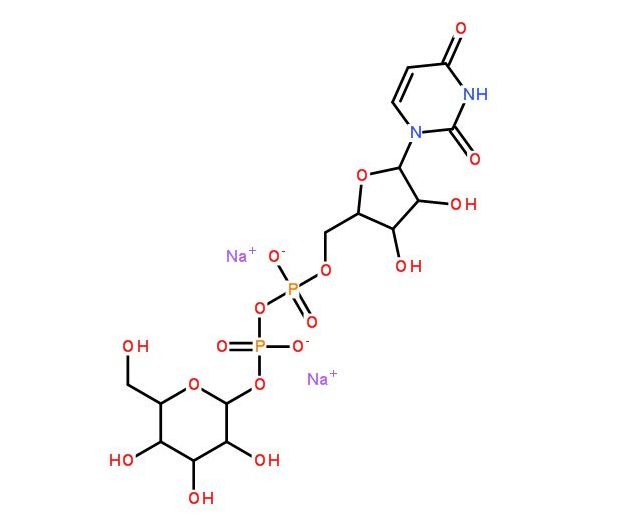
上海金畔生物供应一批糖基供体包括UDP-葡萄糖,此外还有UDP-半乳糖、UDP-鼠李糖、UDP-木糖和UDP-葡萄糖醛酸等产品,也提供UDP(尿苷二磷酸)、CMP(5'-单磷酸胞苷)、GDP(二磷酸鸟嘌呤核苷)偶联修饰各种单糖/多糖(阿洛糖、阿卓糖、阿拉伯糖、赤藓糖、果糖、岩藻糖、古洛糖、艾杜糖、来苏糖、甘露糖、鼠李糖、核糖、塔罗糖、苏阿糖、木糖木聚糖、壳聚糖),提供提供单糖/寡糖/多糖/天然糖类/糖苷/糖脂/糖药物/低聚糖的羧基化、氨基化、脱水脱氧化、卤素化等定制合成服务。
| UDP-葡萄糖 | 50mg |
| UDP-葡糖醛酸 | 50mg |
| UDP-木糖(UDP-Xyl) | 20mg |
| UDP-Glucose(UDP-Glc)二磷酸尿苷葡萄糖 cas:133-89-1 | 5mg |
| UDP-Glucose | 50mg |
| PLGA(50/50)5K-PEG3.4K-4-氨基苯基-α-D-吡喃甘露糖苷 | 1G |
| NHS改性的甘露糖 | 100mg |
| NHS-PEG5k-甘露糖 | 1g |
| NH2-PEG2K-甘露糖 | 500mg |
| DSPE-PEG-Mhainose甘露糖, MW:2000 | 25mg |
| DSPE-PEG2000-Mhainose甘露糖 | 100mg |
| DBCO-四乙酰甘露糖胺 | 20mg |
| Chitoshai-Mhainose 壳聚糖-甘露糖 | 1g |
| 1-硫代-β-D-葡萄糖 钠盐 | 1g |
购买须知:
1.关于颜色
产品因不同产品的分子量不同,产品性状和颜色会有差别。
2.关于客服
如您的咨询没能及时回复,可能是当时咨询量过大或是系统故障。
我们将提供售后服务。
3.关于发货
我们的合作快递公司有顺丰、圆通、申通、韵达。
UDP糖 | UDP-葡萄糖焦磷酸化酶、UDP-半乳糖差向酶、UDP-半乳糖脱氢酶、UDP-葡萄糖、UDP-半乳糖和UDP-葡萄糖醛酸
UDP糖
谷氨酸棒杆菌CCTCC M201005能合成一种以半乳糖醛酸为主要结构单元的蛋白聚糖类生物絮凝剂(命名为REA-11).
为了研究该聚合物的生物合成途径,构建了谷氨酸棒杆菌生物合成REA-11的假设途径,
然后从(1)中间代谢产物的添加及相关途径关键酶活性的检测和(2)胞内中间代谢产物的检测两个方面来验证该代谢途径的合理性.
研究表明,在培养基中添加代谢途径的中间产物UDP-葡萄糖,可显著提高REA-11的絮凝活性,并且UDP-半乳糖差向酶和UDP-半乳糖脱氢酶的比酶活也分别提高了200%和50%;
以不同底物为碳源,UDP-葡萄糖焦磷酸化酶、UDP-半乳糖差向酶和UDP-半乳糖脱氢酶的比酶活与REA-11产量的相关系数可分别达到0.75,0.89,0.97.
此外,利用HPLC检测出REA-11合成途径中3种关键中间产物UDP-葡萄糖、UDP-半乳糖和UDP-葡萄糖醛酸.
由此证明,所构建的REA-11生物合成途径基本合理.

上海金畔生物供应一批糖基供体包括UDP-葡萄糖,此外还有UDP-半乳糖、UDP-鼠李糖、UDP-木糖和UDP-葡萄糖醛酸等产品,也提供UDP(尿苷二磷酸)、CMP(5'-单磷酸胞苷)、GDP(二磷酸鸟嘌呤核苷)偶联修饰各种单糖/多糖(阿洛糖、阿卓糖、阿拉伯糖、赤藓糖、果糖、岩藻糖、古洛糖、艾杜糖、来苏糖、甘露糖、鼠李糖、核糖、塔罗糖、苏阿糖、木糖木聚糖、壳聚糖),提供提供单糖/寡糖/多糖/天然糖类/糖苷/糖脂/糖药物/低聚糖的羧基化、氨基化、脱水脱氧化、卤素化等定制合成服务。
| UDP-葡萄糖 | 50mg |
| UDP-葡糖醛酸 | 50mg |
| UDP-木糖(UDP-Xyl) | 20mg |
| UDP-Glucose(UDP-Glc)二磷酸尿苷葡萄糖 cas:133-89-1 | 5mg |
| UDP-Glucose | 50mg |
| PLGA(50/50)5K-PEG3.4K-4-氨基苯基-α-D-吡喃甘露糖苷 | 1G |
| NHS改性的甘露糖 | 100mg |
| NHS-PEG5k-甘露糖 | 1g |
| NH2-PEG2K-甘露糖 | 500mg |
| DSPE-PEG-Mhainose甘露糖, MW:2000 | 25mg |
| DSPE-PEG2000-Mhainose甘露糖 | 100mg |
| DBCO-四乙酰甘露糖胺 | 20mg |
| Chitoshai-Mhainose 壳聚糖-甘露糖 | 1g |
| 1-硫代-β-D-葡萄糖 钠盐 | 1g |
购买须知:
1.关于颜色
产品因不同产品的分子量不同,产品性状和颜色会有差别。
2.关于客服
如您的咨询没能及时回复,可能是当时咨询量过大或是系统故障。
我们将提供售后服务。
3.关于发货
我们的合作快递公司有顺丰、圆通、申通、韵达。

